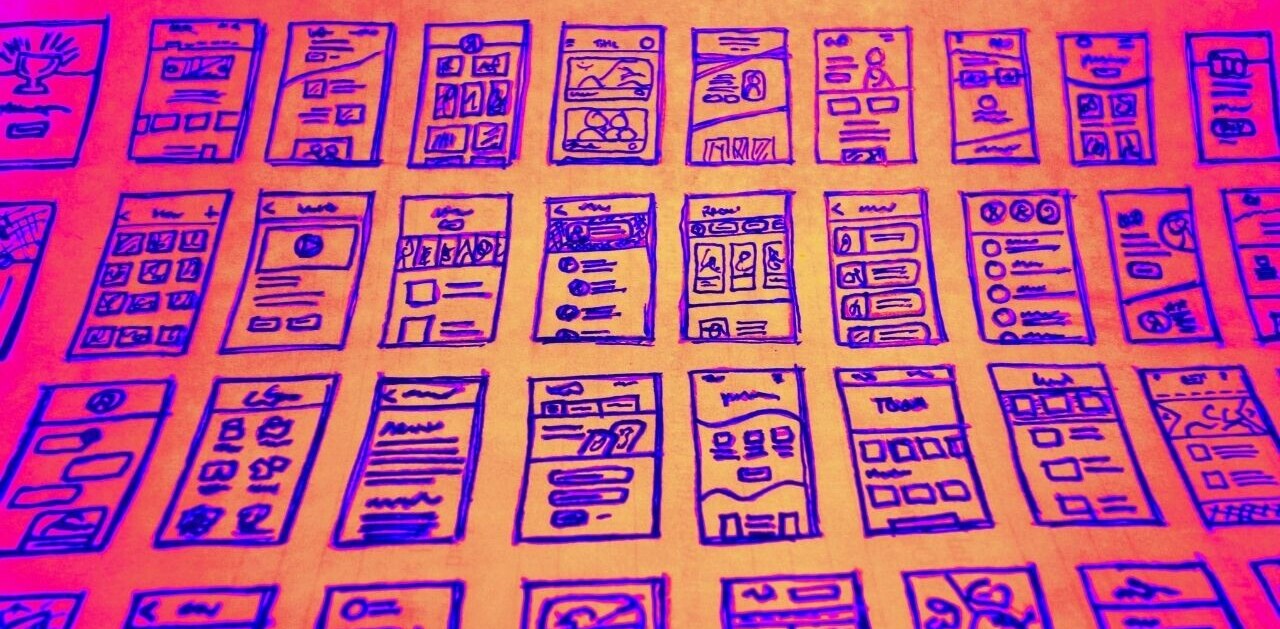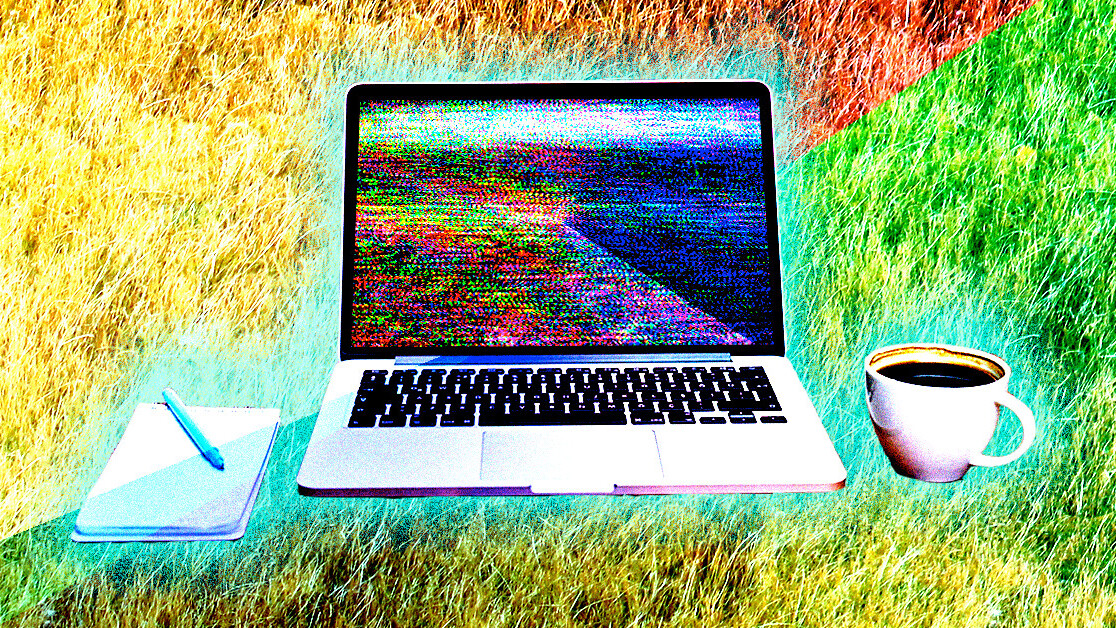
Did you know we have an online conference about product design coming up? SPRINT will cover how designers and product owners can stay ahead of the curve in these unprecedented times.
Being user researchers, our strength lies in planning research and interviewing real users of our product. The research we conduct enables us to have some strong foundation of insights rather than a cloud of intuitions or assumptions that emerge within the team. However, the insights are just the tip of the iceberg and what we don’t see is what lurks beneath the surface. The entire research structure is an elaborate process.
Looking at research studies with a close lens, observation will always remain the priority of research and is a very important UX practice as well. It requires the researchers to be competent with listening and understanding the users, deep diving into their needs, frustrations, motivations, behaviors, and finally determining the observations. Such practice is highly efficient when a team of people participates in the research study to witness the users and their problems.
But, is observation the only critical responsibility while conducting the research?
Well, no. Observation is just one half of the puzzle we are trying to solve. The other half and often neglected one is note-taking. Observation and note-taking go hand in hand, like a team, where different actors can bring various perspectives and lenses into the data gathered.
Read: [How I use note-taking to understand my team better]
This teamwork can be achieved by clearly dividing the roles between a moderator and a notetaker:
Moderator — Conducts the session and interviews the user
Notetaker — Observes and documents the sessions, capturing comments, actions, behaviors, and environments through notes. Here, the notetaker can be another researcher, designer, PMs, developers, business analyst…ANYONE!
Why is note-taking important?
Unfortunately, note-taking isn’t accepted with ease and like me, many researchers must have been trying to explain its importance to the larger group they interact with.
1. Note-taking is a basic User Research skill
Is note-taking really important? We are already observing this right, we can just write down only the interesting points?
“The report is not the only artefact of a research insight.”
Notes are the legos that build the analysis and synthesis. What we capture molds the way we understand the user, their experiences, and problems. Every insight should have a genesis and needs to trackback to raw data i.e notes.
2. Accountability
How does having such detailed notes help in the analysis?
While the sessions may be recorded with informed consent, notes are used to accelerate the analysis process. Notes are easier to access than recordings, you can find what you are looking for faster instead of re-visiting your 45mins to an hour-long recording.
3. Makes follow up easy
“The user mentioned something really interesting and I had wanted to know more about it. I really can’t recall it right now.”
By note-taking, you can have opportunities to deep dive into the research by asking follow up questions.
Notes come in handy when the observer would like to follow up with some questions based on the user responses to get the maximum information or understand better. These questions can be easily noted down and asked at the end of the session.
4. Unreliability
“We can hear the recordings later once we are back at work and complete the notes as well”
Watching the video/audio recordings post the research is a tedious task. Post research, the focus is on planning out the analysis process and time is something we don’t have at hand. Also, sometimes, many of the folks who accompanied you through the sessions may not be free to actively help out in the analysis as the work just gets piled up, creating a back-log in your plan.
It’s important to record the notes while you are present at the session, by this, you can capture more about the user than the video/audio recorder can. You can note down the body language, behavior, and personality as well.
Lastly, technology also can’t be 100% relied upon, the camera battery could die, the audio might not get captured or there might be some glitch. So it’s always good to have documented notes as a backup.
How to plan for note-taking?
Even though you’ve managed to lay down the importance of the notetaker, there might still be a few apprehensions:
“We can’t write notes like a researcher. You guys have been doing this since a long time.”
“I am too distracted listening to what the user is saying so I miss everything”
“I make a lot of spelling mistakes so I don’t think I can physically write notes”
Yes, note-taking comes naturally to some and it is a task for others. So here are some ways to start motivating your stakeholders in taking notes during a research study and if you are someone from a non-research background and struggle with note-taking, I hope this helps…
Disclaimer: By writing notes, I do not mean notes for minutes of the meeting or a workshop, user research notes need to be and are different. But these avenues can push you to get into the habit of writing anything and everything.
1. Identify your comfort level
Make sure you stick to a tool that you are comfortable with; you can use a pen and paper or a laptop. Understand the conditions that the research would be conducted in (remote, walking, an unknown space, a research room) so that you can be prepared for it. Make your strengths well known so that it is taken into consideration and accounted for while planning the structure of the notes.
2. Know the type of study you will be involved in
Understand the kind of study your team would be following and the amount of data you would be extracting. By being prepared, you make sure that the right data is being collected in an appropriate format that your team can work with.
A spectrum showing how note-taking varies from a small usability study to an ethnographic study.
The extreme range of Notes depending on the kind of study.
3. Familiarity with the Script
For those participating in the research, it is essential to go over the questions to be asked and know the flow of the session. This would help in avoiding any confusions on the main day so you can undividedly focus on capturing every detail possible.
Training yourself to take effective notes
Notes aren’t just a good-to-have, something to elevate ourselves as the voice of the user. To be able to do something with them, we need to ensure that the notes are captured in the right way.
Here are some tips that worked while I took the notes (trust me that’s all I had to do as for a couple of months as an intern) or when I involved people to observe my research sessions:
1. Set a structure
Here is where your research guide would help, prepare a document divided by broad topics mentioned in the interview question. The notes can be added to each section when covered during the interview. Discuss with the folks you will be working with to make sure you have covered everything important.
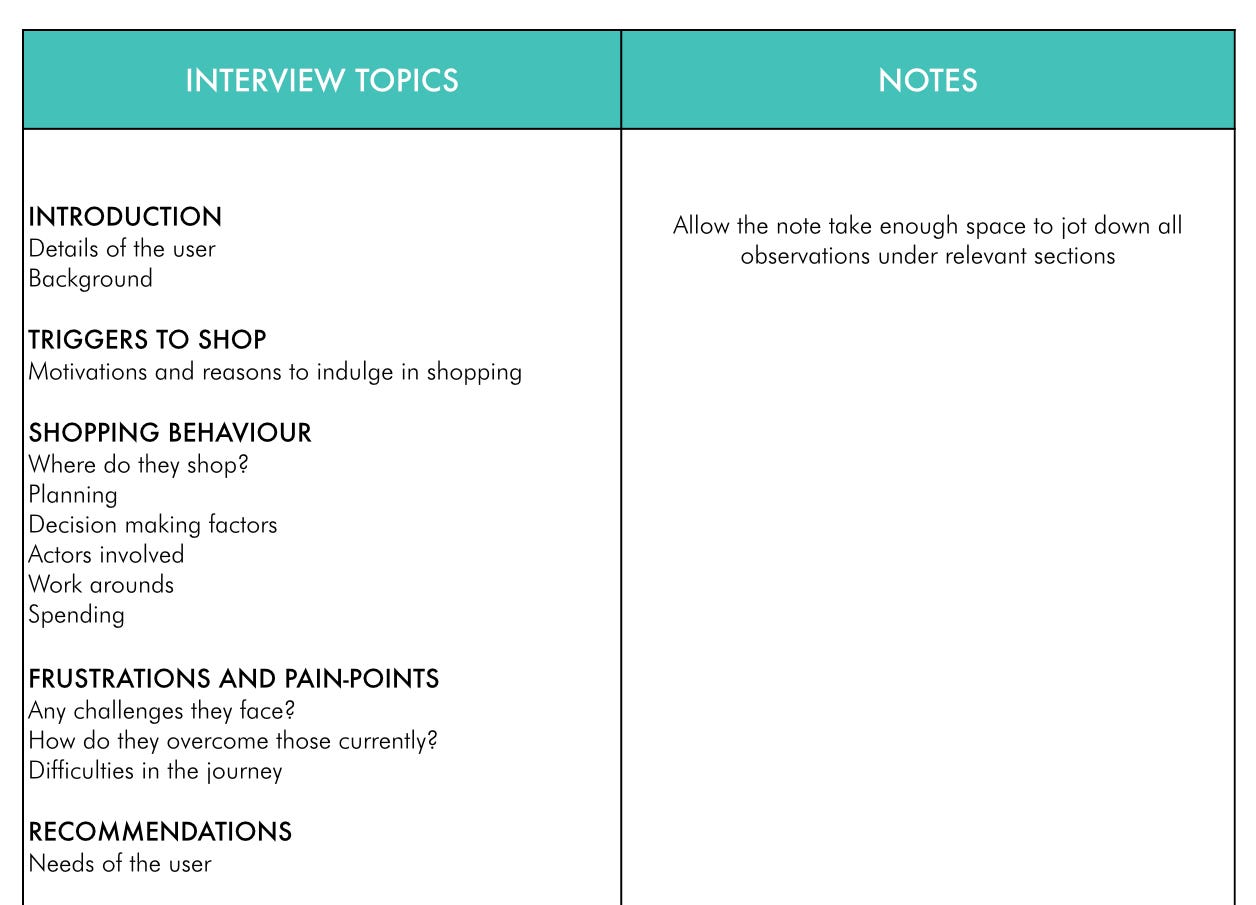
There is no single framework for this. Experiment with different layouts to see what is most suitable for the study you have at hand. I came across one such interesting layout which may work for contextual interviews.
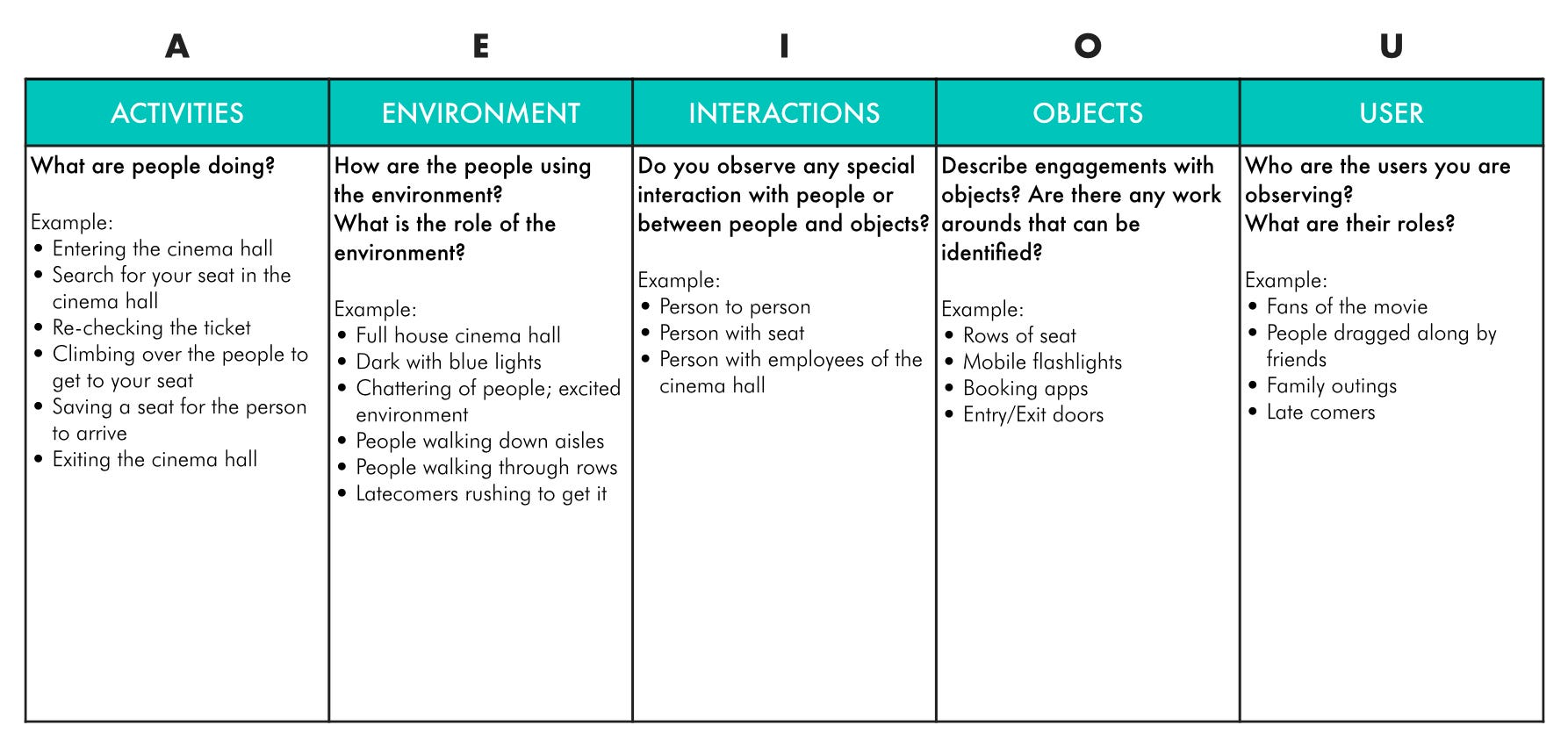
2. Quote, don’t interpret
Try capturing the verbatim (what the user exactly said and what they did) instead of making conclusions. By doing this, maybe you are adding your own biases which are unrelatable to the user. There is an entire next phase for synthesis and sense-making where the skills of interpreting will come in handy.

3. Do not filter
Record ALL notes and not just the one related to your product or feature. By doing so, you might be capturing user needs and behaviors that shape your product’s future action.
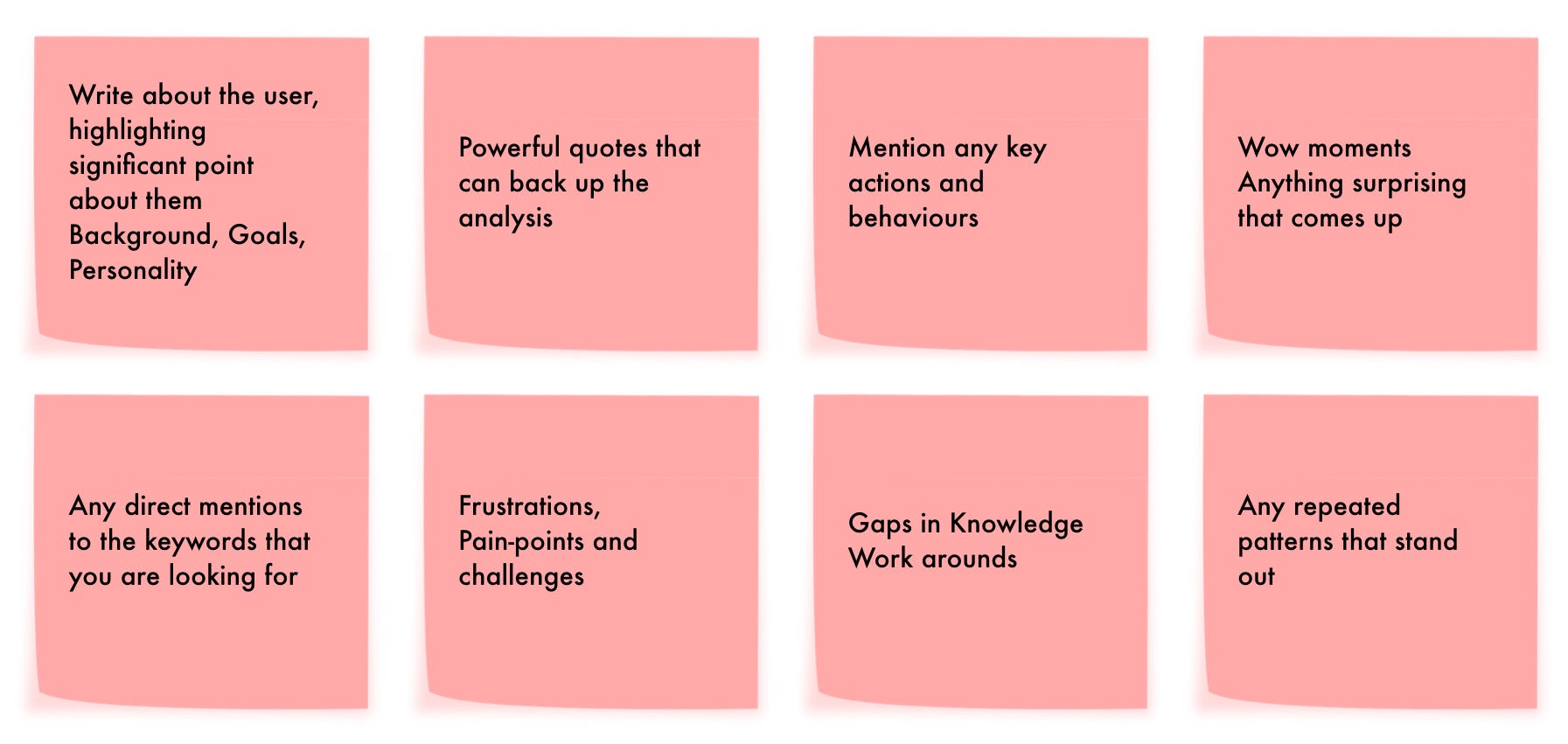
4. Do a favor by adding time stamps
It is fine to miss a few things while taking notes. Keeping a time display for every session helps you to highlight the times of the section you couldn’t capture. In this way, you can get back to that precise part of the recording and complete it.
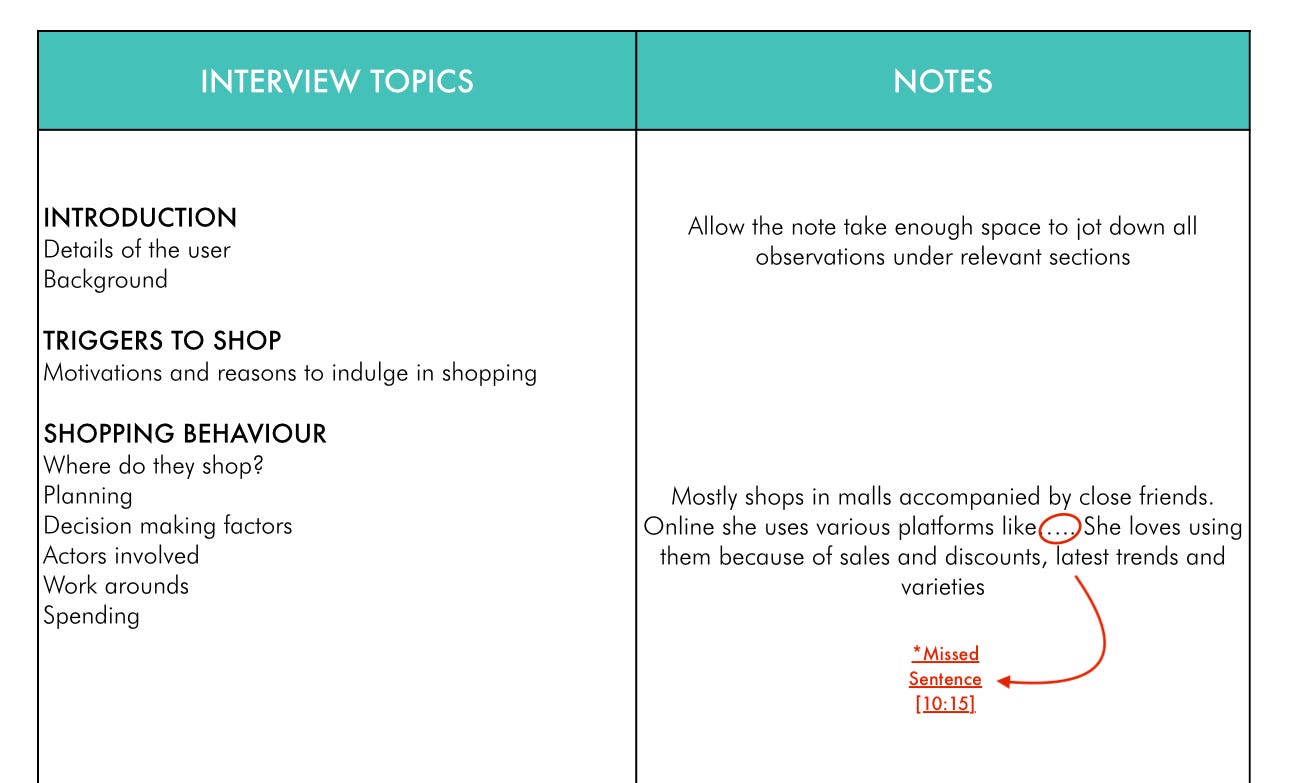
Pro Tip: It’s best to review the notes just after the interview or the very same day so that any likely missing info is recalled and immediately written.
So, what’s next?
Now that you have got your raw data, it’s obvious that not many people would be able to consume so much. This raw data needs to be broken down and individually coded by the researchers. The individual parts will then be stitched together and identified as trends, themes, and insights sketching out the entire story.
In conclusion, all the “grunt work” (like a few people call it or even get overwhelmed with) helps you be completely convinced about your insights and finish the project strong!
This article was originally published by Cydelle Zuzarte on UX Collective, a publication sharing curated stories on UX, visual & product design. You can read the original piece here.
Get the TNW newsletter
Get the most important tech news in your inbox each week.





